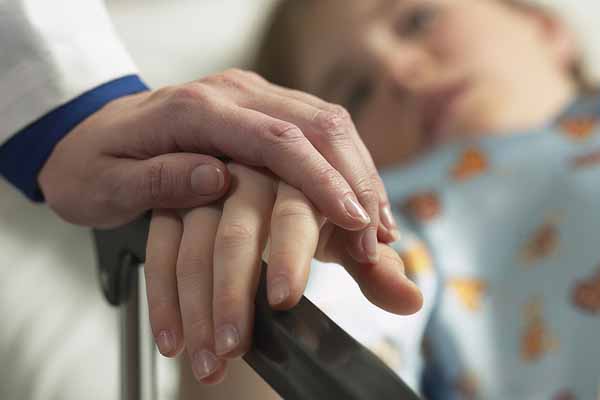
COVID-19’s psychological toll has been particularly heavy on children and adolescents. That prompted the American Academy of Pediatrics, the American Academy of Child and Adolescent Psychiatry, and the Children’s Hospital Association to declare a “national state of emergency” in children’s mental health.
Between mid-March and October 2020, mental health emergency department visits increased 24% for children aged 5 to 11, and 31% for those aged 12 to 17 compared with the same period in 2019, according to the Centers for Disease Control and Prevention.
There also is ample anecdotal evidence from primary care and pediatric physicians, child psychiatrists, and hospitals that the pandemic fueled a dramatic increase in the number of young people who need behavioral health care, says Nhung Tran, MD, a developmental-behavioral pediatric specialist in Austin.
All of us have been feeling it from the ground level,” she said. “Children are living in a constant state of uncertainty and fear. I am hearing many of my patients express fear of becoming sick and [of] death. Even worse, our children are put in the middle of the misinformation, debates, and conflicting policies about how to manage the pandemic.”
At Cook Children’s Medical Center in Fort Worth, pediatric attempted-suicide cases have increased about 104% from 2015 to 2020, according to spokesperson Caroline Hughes. In 2020, there were 294 attempted suicide cases at Cook Children’s. As of August 2021, there already had been 293 attempted suicides, with four months of the year remaining.
The current crisis is part of a longer trend, according to the October statement by the three organizations, some of which recently testified before the U.S. House Energy and Commerce Committee on the behavioral health impact of the pandemic on children and adolescents.
“Rates of childhood mental health concerns and suicide rose steadily between 2010 and 2020 and by 2018 suicide was the second-leading cause of death for youth ages 10-24,” the groups’ declaration said. “The pandemic has intensified this crisis: across the country we have witnessed dramatic increases in emergency department visits for all mental health emergencies, including suspected suicide attempts.”
Also, health care inequities tied to race have led to “disproportionate impacts on children from communities of color,” the statement said.
Thanks to Texas Medical Association-backed laws passed in recent years, Texas is in better shape than many other states to address the crisis, Dr. Tran says.
For instance, the 2019 Texas Legislature created the Texas Child Mental Health Care Consortium. The consortium oversees the Child Psychiatry Access Network (CPAN), which gives pediatricians and family physicians across Texas free telemedicine-based consultation and education on behavioral and mental health for children in primary care. Physicians can call CPAN and typically get professional advice in minutes.
The consortium also oversees Texas Child Health Access Through Telemedicine (TCHATT), which uses telemedicine to help behavioral health specialists go into school districts to assess elementary through high school students with mental health needs. Likewise, the consortium funds expansion of the psychiatric workforce, child and adolescent fellowship programs, and improved mental health research.
Despite these resources, stress caused by the pandemic has worsened the symptoms of many young people already diagnosed with mental illness, Dr. Tran says. Those children and many with developmental disorders have suffered even more because the pandemic caused a sudden withdrawal of in-person therapy and services.
“We may be seeing a significant increase due to new cases of children presenting with new behavioral and mental illness, likely because these children [before the pandemic] had subclinical or mild cases that were doing well on the stability of home and family, daily routines, and psychosocial networks of peers, neighbors, extended family, and educators,” she said.
The statement by the three organizations calls for several initiatives to address the emergency, including initiatives that speak to the aims of CPAN and TCHATT:
- Increase federal funding dedicated to ensuring all families and children can access evidence-based mental health screening, diagnosis, and treatment – with particular emphasis on meeting the needs of under-resourced populations;
- Address regulatory challenges and improve access to technology to ensure continued availability of telemedicine;
- Increase implementation and funding of effective models of school-based mental health care, such as TCHATT;
- Accelerate the adoption of effective and financially sustainable models of integrated mental health care in primary care pediatrics, like CPAN;
- Strengthen emerging efforts to reduce the risk of suicide in children and adolescents through prevention programs in schools, primary care, and community settings;
- Address the ongoing challenges of the acute care needs of children and adolescents, including the shortage of beds and emergency department boarding;
- Fully fund comprehensive, community-based systems of care that connect families in need of behavioral health services and support for their child with evidence-based interventions;
- Promote and pay for trauma-informed care services that support relational health and family resilience;
- Accelerate strategies to address longstanding workforce challenges in child mental health; and
- Advance policies that ensure compliance with and enforcement of mental health parity laws.
Read the latest edition of Texas Medicine magazine for more information about the impact of COVID-19 on mental health care. And check out TMA’s Behavioral Health webpage.